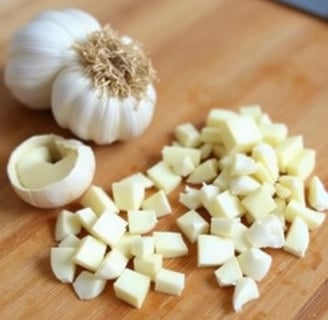Add Garlic to Your Diet: Naturally Lowers Cholesterol and Improves Circulation
🧘WELLNESS TIPSHEART HEALTH & CIRCULATION❤️


For a healthier lifestyle, dietary choices play a crucial role in maintaining overall well-being. One such dietary powerhouse that has captured the attention of health enthusiasts and researchers alike is garlic. Not only is garlic a staple in various cuisines around the world, but it also boasts a plethora of health benefits backed by scientific evidence. Among its many advantages, garlic is particularly renowned for its ability to naturally lower cholesterol levels and improve circulation. In this article, we delve into the science behind these claims, how garlic works in the body, and practical tips for incorporating this superfood into your daily diet.
The Scientific Evidence: Garlic and Cholesterol
Cholesterol, a waxy substance found in your blood, is essential for the production of hormones, vitamin D, and bile acids that help digest fat. However, when levels of low-density lipoprotein (LDL) cholesterol — often referred to as "bad" cholesterol — become elevated, it can lead to cardiovascular diseases, including heart attacks and strokes. Therefore, managing cholesterol levels is paramount for maintaining heart health.
Several studies have investigated the effects of garlic on cholesterol levels. A systematic review published in the Journal of Nutrition found that garlic supplementation significantly reduced total cholesterol levels and LDL cholesterol in people with high cholesterol. The review included data from multiple trials, reinforcing the potential of garlic as a natural remedy for hyperlipidemia (elevated cholesterol levels).
One of the key compounds in garlic responsible for its cholesterol-lowering effects is allicin, which is produced when garlic is chopped or crushed. Allicin possesses anti-inflammatory and antioxidant properties, which may contribute to its ability to reduce LDL cholesterol levels while simultaneously raising high-density lipoprotein (HDL) cholesterol, known as "good" cholesterol. This balance is crucial for maintaining a healthy lipid profile and reducing the risk of cardiovascular disease.
Mechanisms of Action
The mechanisms by which garlic influences cholesterol metabolism are multi-faceted:
Inhibition of Cholesterol Synthesis: Research indicates that allicin may inhibit the enzymes involved in cholesterol synthesis in the liver, thereby reducing the overall production of cholesterol in the body.
Enhanced Cholesterol Excretion: Garlic may promote the conversion of cholesterol into bile acids, which are then excreted through the digestive system. This process not only helps lower cholesterol levels but also supports digestive health.
Improved Endothelial Function: Garlic has been shown to improve endothelial function, which is essential for maintaining healthy blood vessels. A healthy endothelium allows for better blood flow and circulation, further supporting heart health.
Garlic and Circulation: The Evidence
In addition to its cholesterol-lowering properties, garlic is celebrated for its ability to improve circulation. Circulation is vital for transporting oxygen and nutrients throughout the body and removing waste products. Poor circulation can lead to various health issues, including fatigue, numbness, and increased risk of cardiovascular disease.
How Garlic Enhances Circulation
Several studies have highlighted the positive effects of garlic on blood circulation:
Vasodilation: Garlic has been shown to promote vasodilation, the process by which blood vessels relax and widen. This effect can help lower blood pressure and improve blood flow. A study published in The American Journal of Hypertension found that garlic supplementation led to significant reductions in systolic and diastolic blood pressure in patients with hypertension.
Anti-Platelet Activity: Garlic exhibits anti-platelet effects, which means it can help prevent the clumping of platelets in the blood. This action reduces the risk of blood clots and can improve overall circulation.
Antioxidant Properties: Garlic's antioxidants protect blood vessels from oxidative stress, which can impair circulation. By neutralizing free radicals, garlic helps maintain the integrity and flexibility of blood vessels.
Practical Tips for Incorporating Garlic into Your Diet
Now that we've explored the scientific evidence supporting garlic's health benefits, the next step is to incorporate this versatile ingredient into your daily diet. Here are some practical tips:
Raw Garlic: The most potent health benefits come from raw garlic. Try adding minced or chopped garlic to salads, salsas, or dressings. Just remember to let it sit for a few minutes after chopping to maximize allicin production.
Cooking with Garlic: Garlic can be added to a wide range of dishes, including stir-fries, soups, and marinades. While cooking can diminish some of garlic's health benefits, it still retains many of its properties when sautéed or roasted.
Garlic Supplements: If you find it challenging to incorporate enough garlic into your diet, consider garlic supplements. Look for standardized allicin products to ensure you receive a consistent dosage.
Garlic-Infused Oils: Use garlic-infused olive oil for cooking or as a dressing. This adds flavor while still delivering some health benefits.
